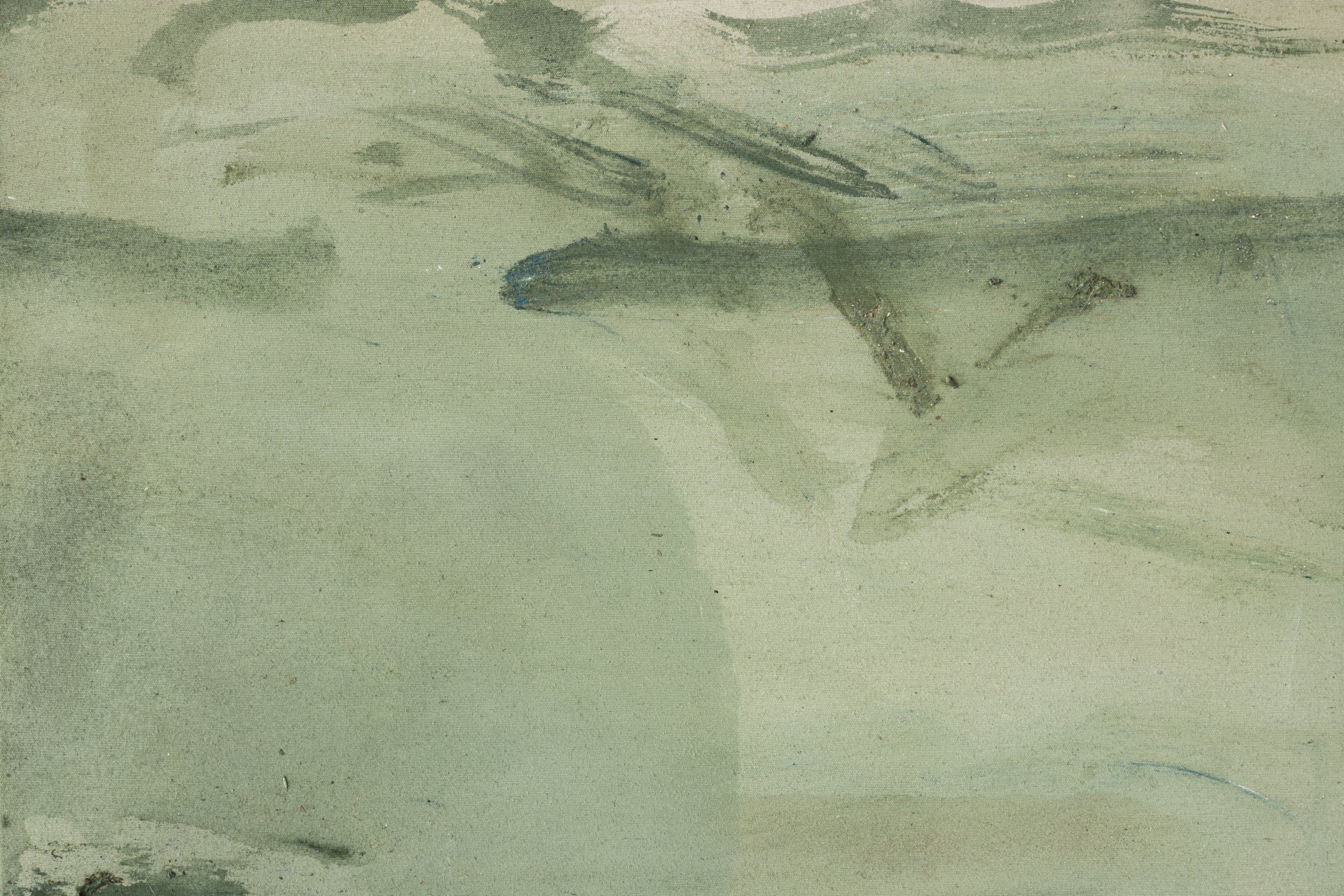
F I L I P A T O J A L
Through the language of abstraction, Filipa Tojal explores the relation between nature and art. The artist’s solo exhibition Verdant (2021) at Sage Culture Gallery traces her return home to Portugal, after four years living in Japan. Awash with fresh green hues of varying translucence and opacity, shallow and depth, this collection of paintings reflects well the title concept of verdant, and the analogous Japanese word shinryoku 新緑 meaning “new green” or “the fresh verdure of spring.” Drawing on Western and Eastern techniques, each painting gestures to natural surrounds, calling to mind lush grasses and fertile soils, pools of water with surface reflections of sky, a profusion of sprouting leaves, and other abundant forms of vegetation.
Together, Tojal’s paintings evoke a calming atmosphere of renewal. The layered wash of greens offers a refreshed perception of the world, even as it does not simply rinse clean or purify the senses. Rather, each surface speaks to an invigorating depth, a layered complexity found in the natural environment. The organic colour palette is, as Tojal says, “quite subdued but not innocent.” The canvas swims with varying densities, shades and textures, and the use of raw, natural materials results in intriguing disturbances. Far from a naïve, pastoral view of the earth, then, Verdant communicates a deep ecology, one that is woven from complex, interrelated biological systems—from cycles of growth and decay, death and rebirth.
Created upon Tojal’s return from Japan to Porto, Portugal, the paintings in this collection are, in many respects, a literal weave of the artist’s home. The various filaments of earth—soil, lichen, bark, twig—that intermingle on the painted surface, are carefully gathered by hand from local surrounds. Many of the canvases, too, are crafted from ancestral linens, becoming quite literal embodiments of Tojal’s family history:
“In my family, in everyone’s house, there were always drawers or trunks filled with these fabrics, which for me always smelled like stone houses and olive trees. Opening these trunks connected me to the women in my family I have never had the chance to meet and the straw beds I never slept in. Some of these had delicate embroideries, but most of them were just plain and simple. They were the bed sheets everyone slept on every day. From mother to daughter, these linens passed on: generation to generation.”
— FILIPA TOJAL
For all their ties to Porto, however, the paintings of Verdant feel amorphous and geographically indeterminate. Abstract to the last, Tojal’s landscapes emerge as a global assemblage. They are inspired as much by the artists’s homeland, as by her time living in Japan—sweeping brushstrokes on translucent surfaces gesture to the traditional Japanese art of calligraphy and paper-making—as well as her extensive travel across Europe and the Asia-Pacific. Tojal has participated in artist-in-residency programs throughout the world, including Australia, France, Germany, India and Indonesia. “The imaginary of my works comes from everywhere, not only the villages I grew up in,” writes Tojal. “The Portuguese mountainside, the dryness of its soil, the calming rivers, appear as much as the Japanese greenery in its fullness, the Northern Vietnamese lakes, as well as the wintery city gardens of Berlin. Sometimes the first lines come from a specific place and end up somewhere else, but mostly, it is a composition of different instances to form a new atmospheric reality.”*
Verdant cultivates a larger, more fluid sense of belonging than can be mapped by geography. Stretching well beyond national borders, Tojal’s multitudinous greens speak to a deeper sense of our interconnectedness with the environment. They speak of our submersion in the diverse, shifting ecologies of planet Earth.
—
artwork by Filipa Tojal
exhibition & photography by Sage Culture Gallery in Los Angeles, CA
essay by Jo Ward
* special thanks to Sage Culture Gallery for permission to reproduce imagery and artist citations from the Verdant (2021) exhibition.







